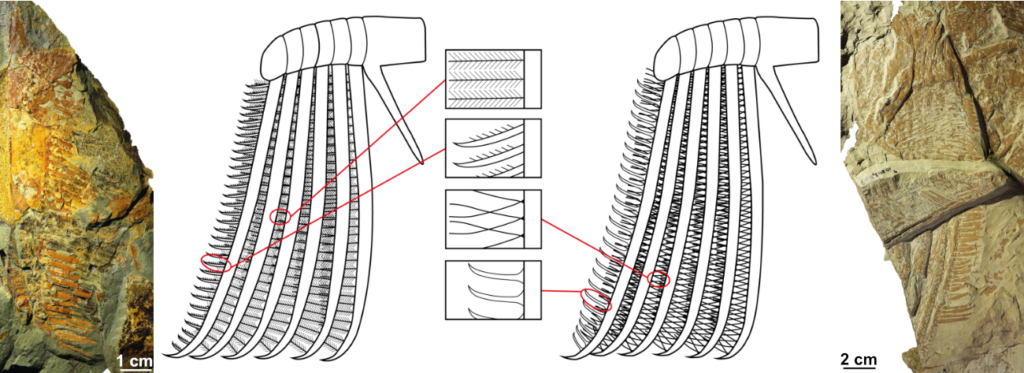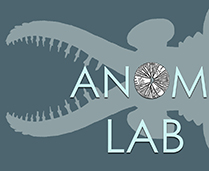The Fezouata Shale has yielded abundant remains of ancient marine organisms, including hundreds of radiodont specimens. Frontal appendages are the most commonly preserved body parts of radiodonts, and their well-preserved anatomical characters are crucial for describing taxonomic diversity at the species level, while also providing essential data on mode of life, paleoecology, and feeding behaviour. In a study led by PhD student Gaëtan Potin and published today in Frontiers in Ecology and Evolution, we examined more than a hundred radiodont frontal appendages specimens from Fezouata curated in the collections of the Musée Cantonal de Géologie de Lausanne and the Yale Peabody Museum, allowing us to revise Aegirocassis Van Roy et al., 2015, the first and only named radiodont yet described from the Fezouata Shale, and to identify several new taxa, most belonging to family Hurdiidae.

We document new details of differentiated endites in Aegirocassis benmoulai Van Roy et al., 2015 and propose an emended diagnosis for this taxon. Additionally, using X-ray computed tomography (CT-scanning) we were able to reconstruct a specimen showing several spinose fragments of the enigmatic fossil Pseudoangustidontus Van Roy & Tetlie 2006, articulated together as endites attached to podomeres of an appendage with an arrangement typical for hurdiids. We also identify a new second species of this genus, Pseudoangustidontus izdigua.
A 3D model of the CT-scanned Pseudoangustidontus izdigua specimen that can be manipulated at will!
Finally, we investigated the ecology of these organisms. The thin, densely-packed auxiliary spines of elongated endites indicate that they were suspension feeders. Among all the examined specimens, we identify suspension-feeding as the feeding strategy for 112 specimens, and sediment-sifting for 9 specimens that possess endites bearing auxiliary spines that are shorter and more robust with a wider interspace between them, forming a coarse, resistant mesh for sifting through sediment for infaunal prey.
Altogether, our study shows that radiodonts in the Fezouata Shale were highly diverse and employed a variety of feeding strategies. The abundance of suspension feeders may be linked to the “Ordovician Plankton Revolution”, which saw a huge radiation in plankton diversity during the Great Ordovician Biodiversification Event. It also highlights the decline of active raptorial predation in radiodonts, as suggested by their absence, so far, in the Fezouata Shale Formation.
Reference: Potin G.J.-M., Gueriau P. & Daley A.C. 2023. Radiodont frontal appendages from the Fezouata Biota (Morocco) reveal high diversity and ecological adaptations to suspension-feeding during the Early Ordovician. Frontiers in Ecology and Evolution 11, 1214109. Find the article (Open Access) here
